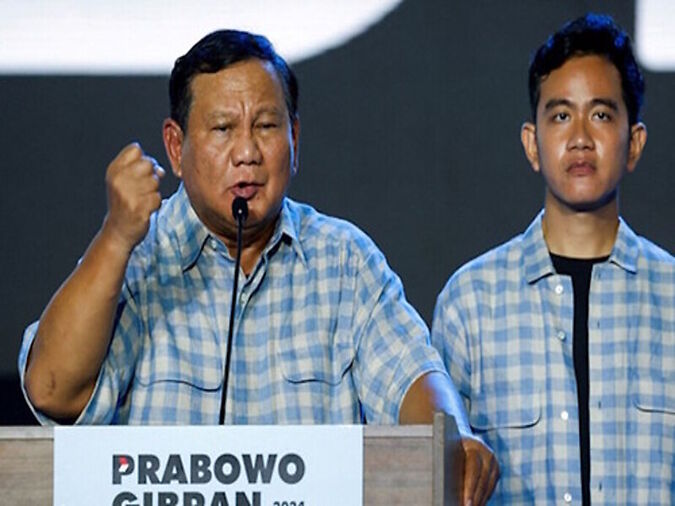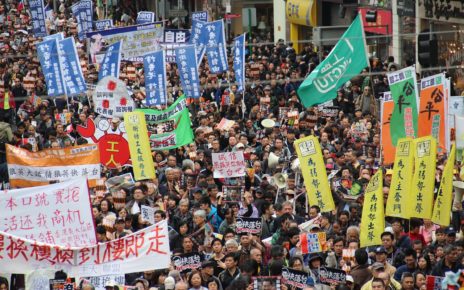In March 2024, Prabowo Subianto—a controversial former general once banned from the U.S. for rights abuses—secured Indonesia’s presidency through a social media campaign that softened his image with playful content targeting youth voters. Not with lies, but with the use of ‘Gemoy’: an adorable online persona who played with cats and did viral dances, whose violent past would seem unforeseeable. A survivor of the 1998 repression notes, young people are not aware of the dictatorship in Indonesia of which Prabowo was part of, instead they only see him as “tough, wealthy, and influential politician of a prominent family.” The campaign reveals a modern political powerplay: drowning out truth not by denying it, but by burying it under an avalanche of distraction. Social media facilitates this, and democracies are uniquely vulnerable to it.
The 72 year old President of Indonesia, Prabowo Subianto, is the son-in-law of the former dictator Suharto, who governed the country from 1967 to 1998. Prabowo, who was in the military, became a general at the end of the 1980s, when the demands for democracy were becoming violent in the country. Prabowo commanded the kidnapping and torture of 23 important activists, of whom 13 are still missing. In 1998, the autocratic regime fell and Prabowo was dismissed. He chose to be exiled in Jordan, only to come back a few years later to form his own political party. He was unsuccessful in two presidential campaigns, partly due to his turbulent past. Prabowo amended this by using social media to rehabilitate his public image. His personal pages showed him talking about political topics while petting his cat, and a cartoon version of him created by artificial intelligence recreating a dance which became viral. These are just some of the ways in which Subianto was able to rebrand his authoritarian past. The success of this practice raises the question: How can social media be used to rewrite history?
The answer lies in the structure of social media itself, which relies on the principle of algorithmic curation for its profitability. Platforms like Tik Tok and Meta do not produce content, but profit from it. Users enter the platform and are expected to stay, thus maintaining a high number of users interacting with ads—their primary source of revenue. Maintaining customer engagement is the primary focus of these platforms, who use profile-driven algorithms. These are algorithms that match content to users based on hundreds of parameters such as location, interests, and the interaction patterns of each profile. The content is algorithmically predicted to engage that specific user by comparing what others with similar parameters are engaged by, while seamlessly blending sponsored content within it. This way, content that fails to draw engagement or is not paid will be discouraged in a typical user’s feed by the algorithm, preventing the user from being in contact with it. This is a mechanism of political exclusion, leading consumers to polarization and echo chambers, by the unavailability of perspectives.
In light of this mechanism, viral content becomes particularly valuable and impactful on the informational landscape. This kind of content does not just spread- it regenerates, mutating into memes, remixes and trends that dominate feeds by sheer repetition. But here is the catch, viral content can be engineered by a series of strategies that hijack the algorithm, in political cases by tailoring content according to the market trends, using fake accounts to boost engagement and hiring influencers to push the intended content into their large following bases. Prabowo’s team knew this, and weaponized it.
Campaign leader, Arief Rosyid, openly spoke about how he viralized videos by analyzing trends “to target [the] audience better.” His analysis worked, leading the campaign to use a cartoon version of Subianto dancing which generated positive interactions. The dance was further replicated by followers and Tik Tok influencers who were ‘following the trend.’ User replication saturated the Indonesian feeds, making his new image more and more viral. This came accompanied by catchy songs that were attached to his movement and the ‘peace’ sign, which was a symbol of support for the candidate’s presidency.
But no single account could drown history by itself. For that, Prabowo needed an army of political buzzers— Indonesia’s term for paid influencers who hijack trends. Through instagram and Tik Tok, these influencers showed support for Subianto’s campaign to their massive follower base. A study by Padjadjaran University, showed how prominent online personalities swayed the perspective of millions of voters by showing admiration to the President. This admiration was done with subjective commentary and personal experiences instead of using objective information.
These two strategies succeeded in discouraging young voters from researching further about Subianto’s past. One of the reasons is that seeing the same information from multiple sources gives the voters a sense that the information is veridical, pushing the audience into an epistemic bubble. Voters engaged with the positive content of Subianto’s campaign will perceive him in a positive light, leading them to psychologically resist any negative talk about the candidate. The second reason comes from the level of confidence influencers have been able to achieve from their followers. In 2024, Reuters Institute found that influencers are more trusted by younger audiences than traditional politicians– 58% of Americans name independent creators as their main source of news. Those audiences that were wary of Subianto’s personal accounts, would get targeted by their favorite influencers that supported the Indonesian politician.
This phenomenon extends far beyond the South Asian country. The campaign is a case study of how governments can push alternative narratives and manipulate perception by encapsulating voters in informational bubbles. His campaign exposes the problematic interconnection between social media’s profit model and anti-democratic forces, where politicians can pay to change public opinion. For instance, a study by the University of Ottawa showed that the Canadian elections were strongly influenced by political influencers that seemed to have ties with certain candidates, essentially functioning like Indonesian political buzzers. The study concludes that it is impossible to know with exactness who is a politically paid agent because there are no laws in Canada that require them to disclose this- in addition to payment that comes from third-parties. This is not misinformation in the traditional sense. It is the weaponization of attention scarcity, where voters are not lied to but deprived of their choice to seek the truth.
Combating algorithmic manipulation requires moving beyond simplistic solutions. Media literacy is shown to be a good measure, but it alone underestimates the power of epistemic bubbles— we cannot expect citizens to fact-check all information when the social media platforms are engineered to exploit their attention. On the other hand, heavy regulations on social media can have negative impacts, such as infringing on free speech or destabilizing the digital economy.
The NATO Strategic Centre of Excellence proposes a series of interventions that preserve the digital economy and amend epistemic bubbles. The first is the use of AI tools to analyze and flag misinformation. These AI tools must be tailored for specific political environments and be constantly evolving to measure disinformation in effective ways- only one AI tool will be incapable of analyzing text and image, rather they must be separate and trained accordingly. The second is the implementation of state-created digital inoculation which seeks to make agents immune to global disinformation topics by the use of short videos and games that inform them in dynamic ways. This measure is strictly for global or scientific phenomena- such as the Covid-19 pandemic- because it is easier to identify a well-known truth. Finally, reforms for platform liability demanding companies to disclose sponsors and flag unverified information are key.
Without these interventions, elections risk becoming exercises of collective amnesia. After all, a vote cast without access to history is not a choice—it’s an algorithm’s output.
Any views or opinions expressed in articles are solely those of the authors and do not necessarily represent the views of the NATO Association of Canada.
Prabowo Subianto (2024) via Openverse. Licensed under Public Domain Mark 1.0.





